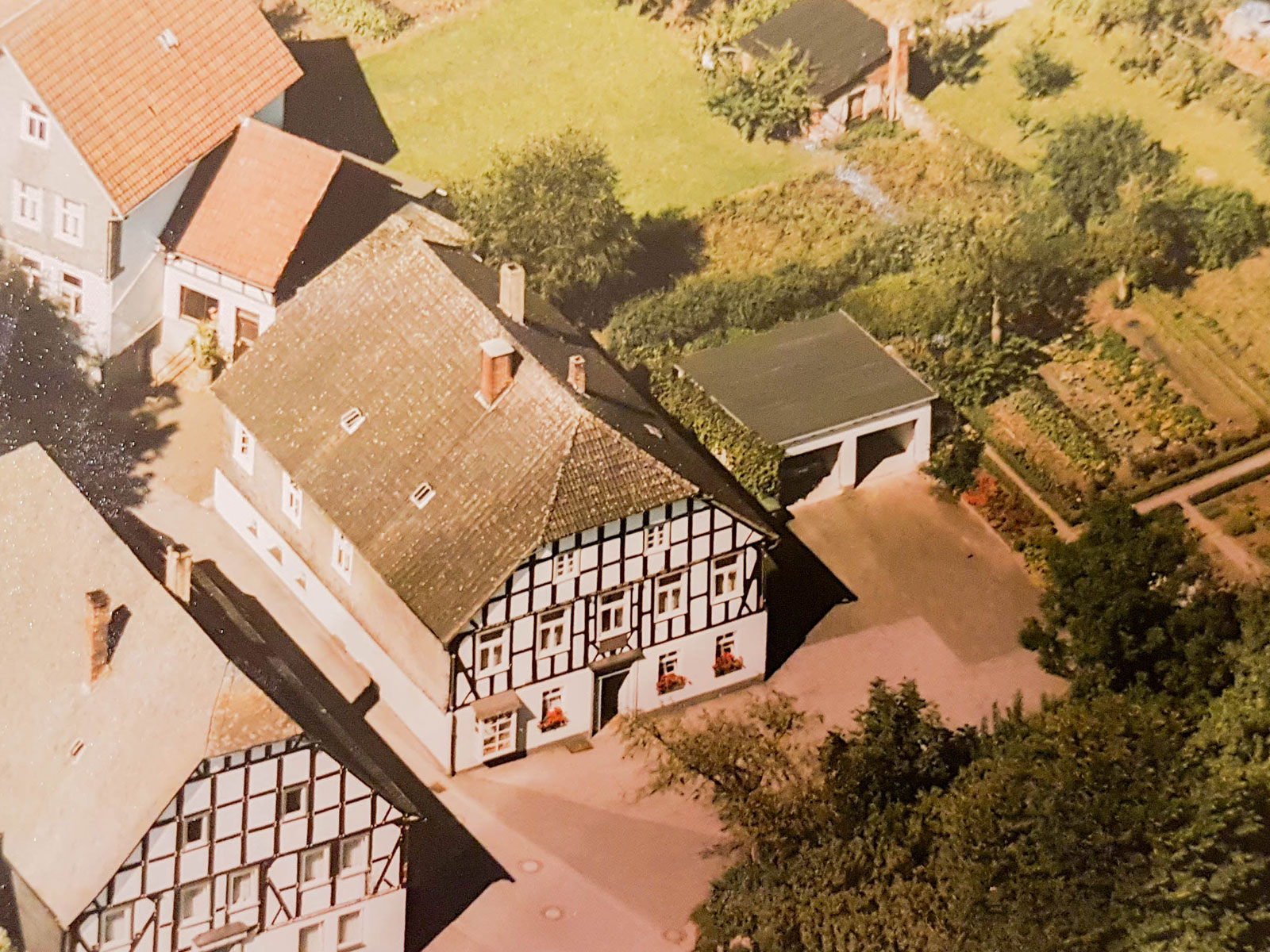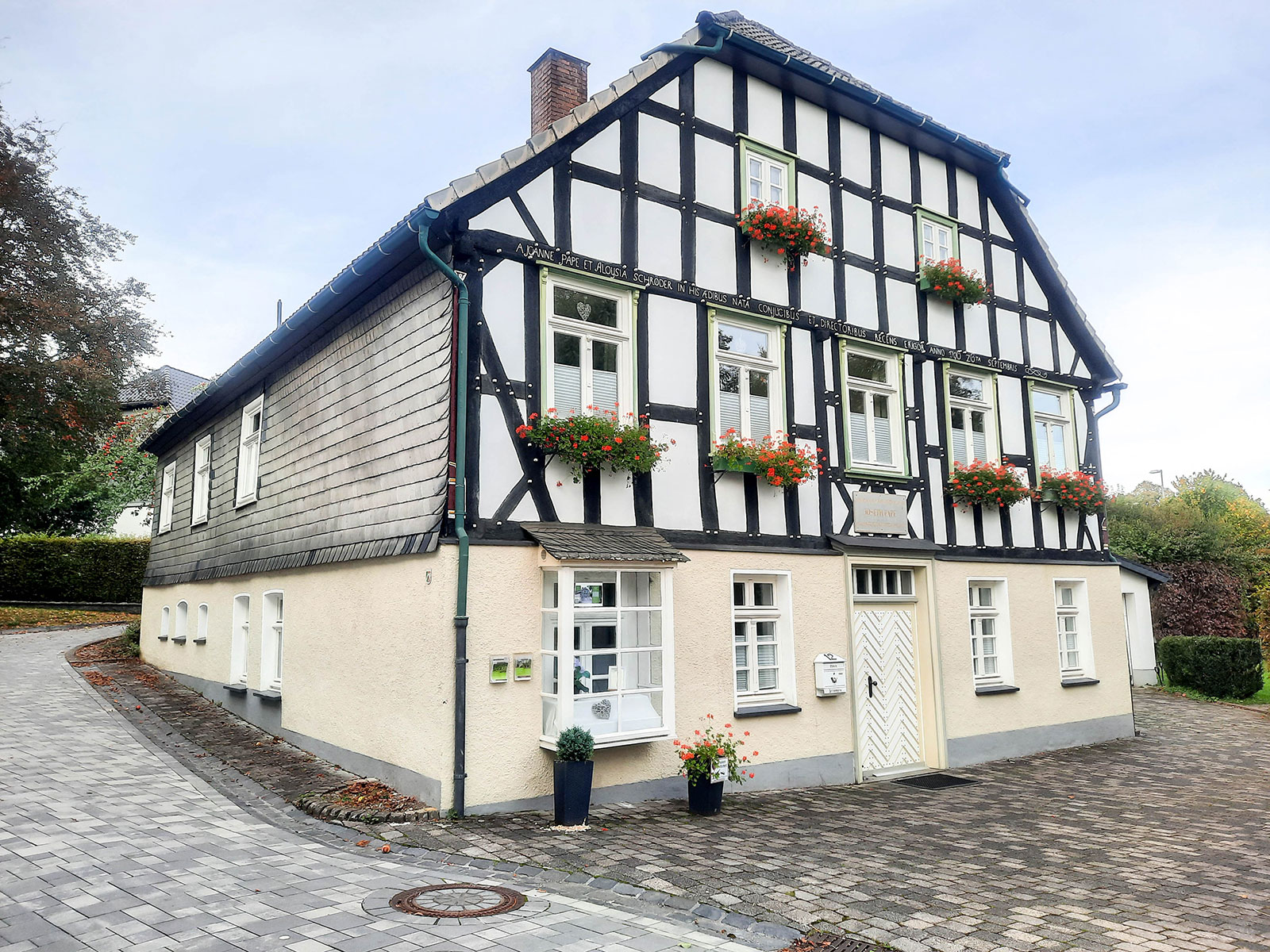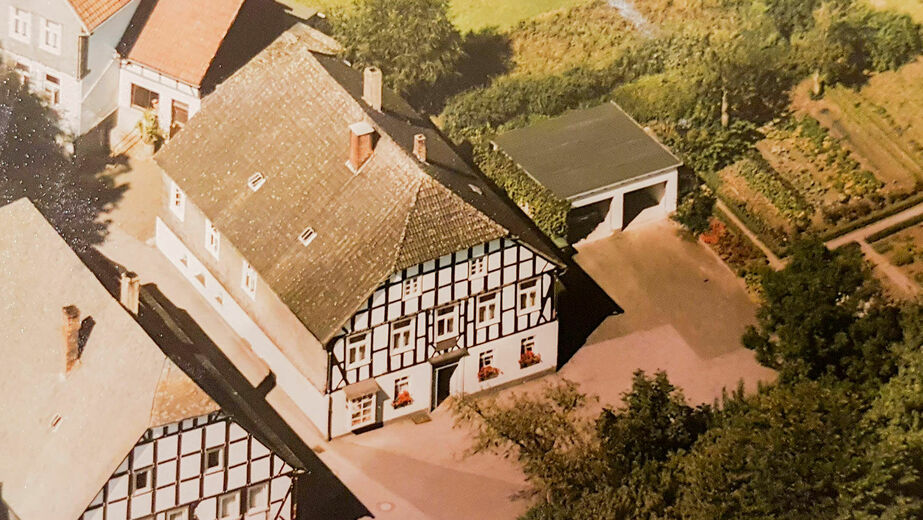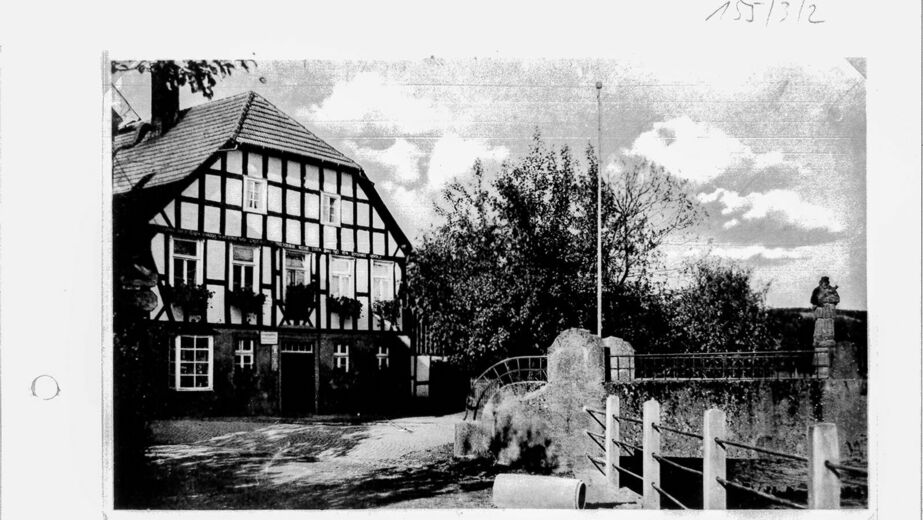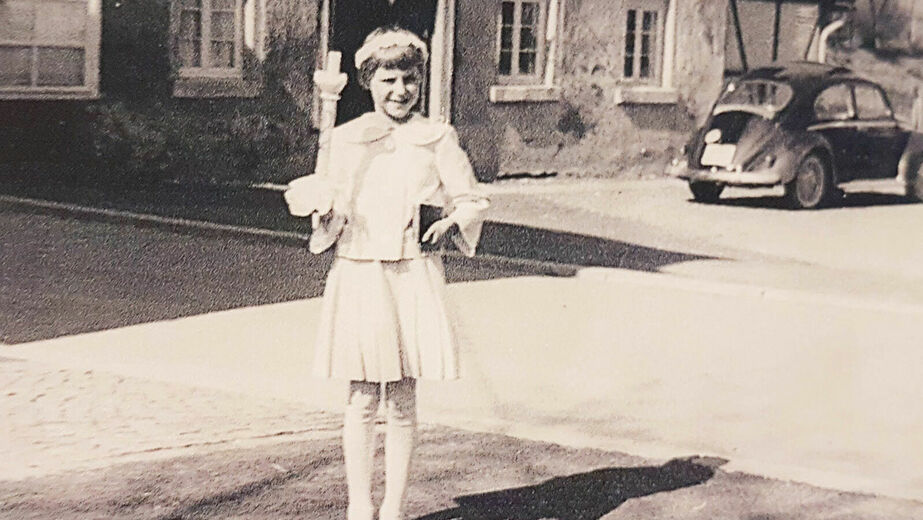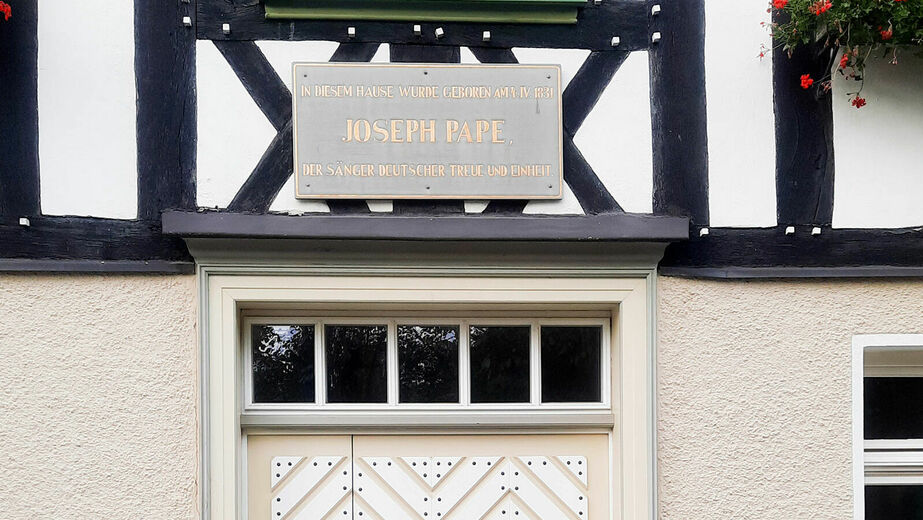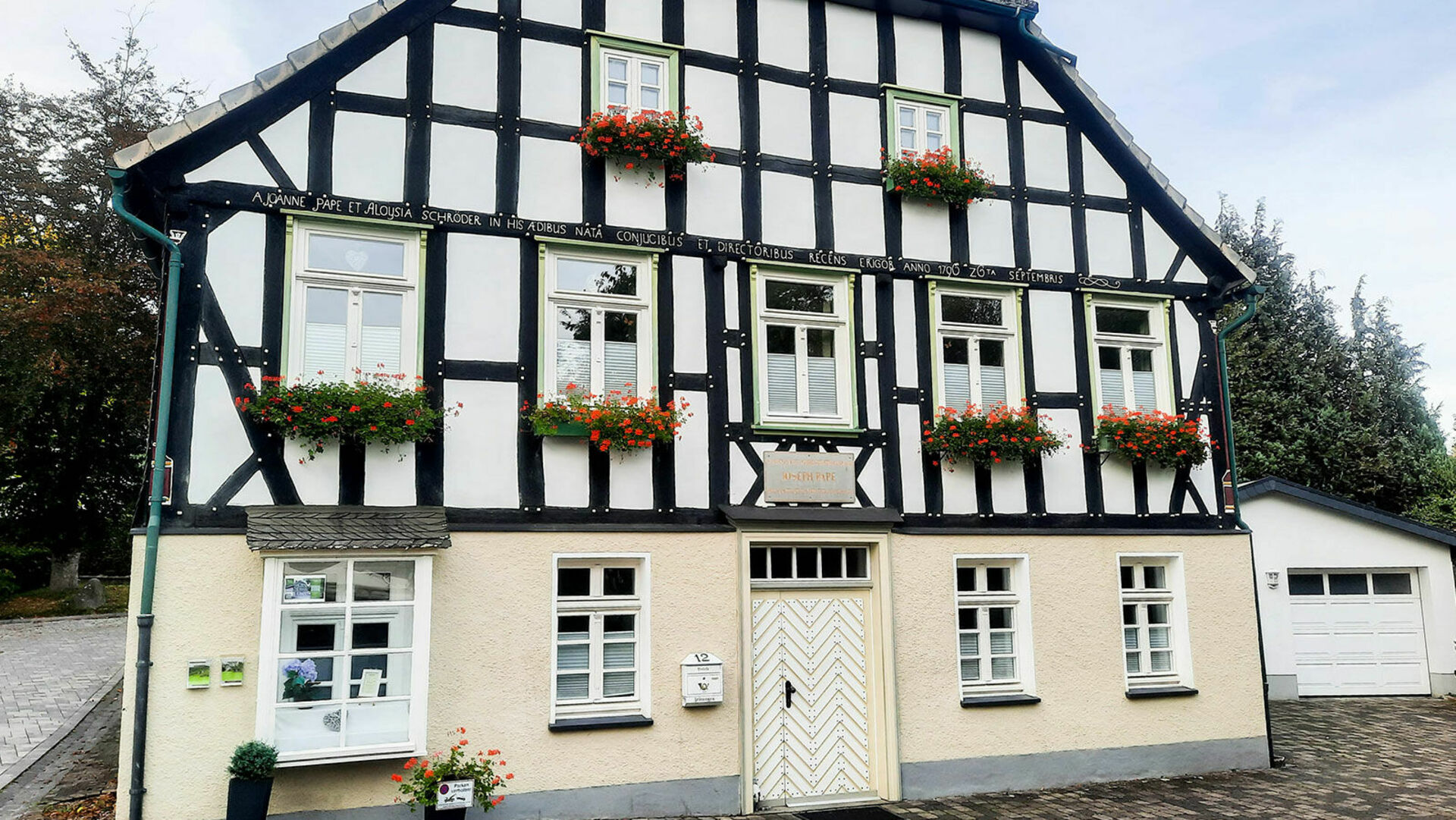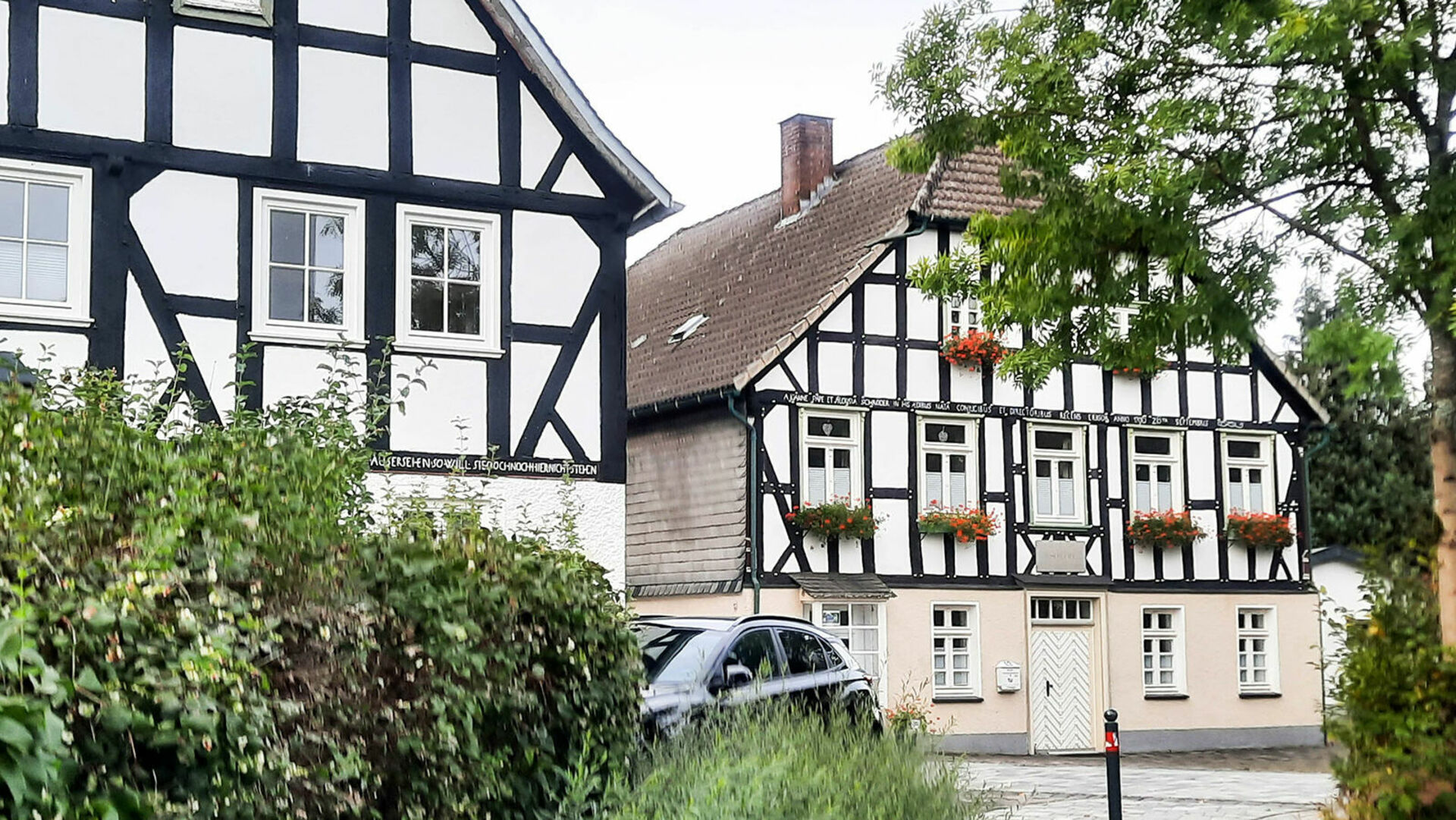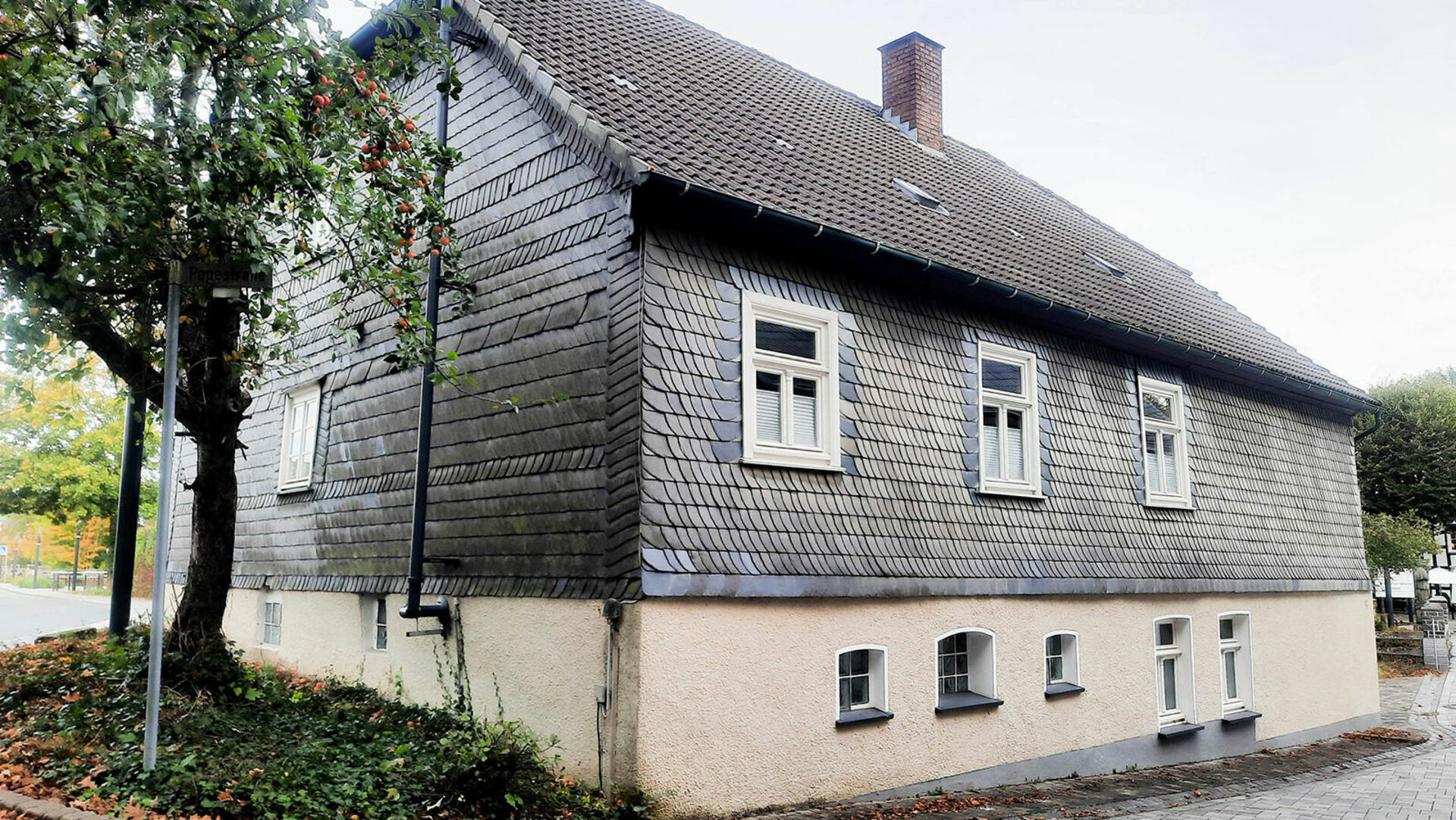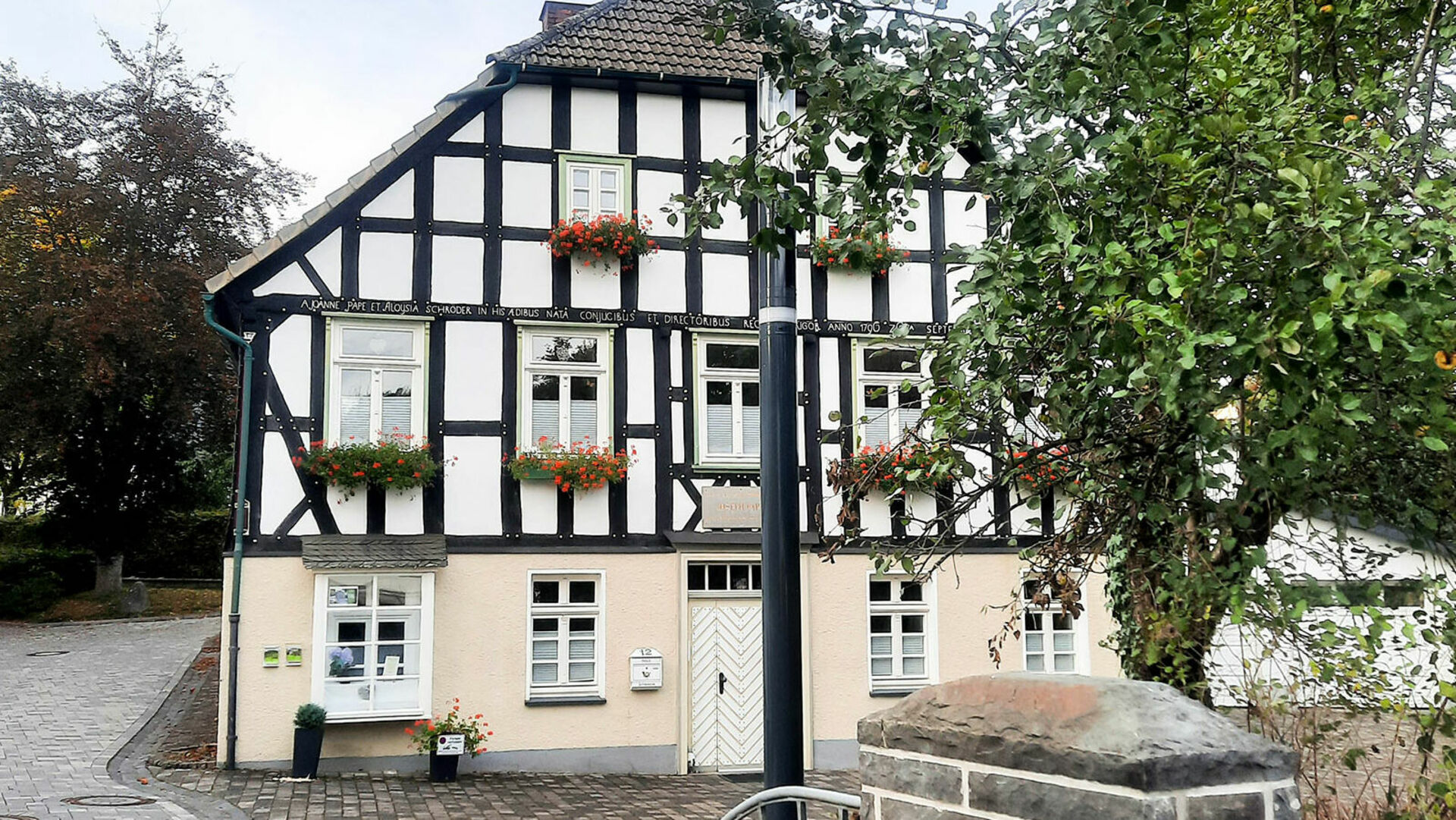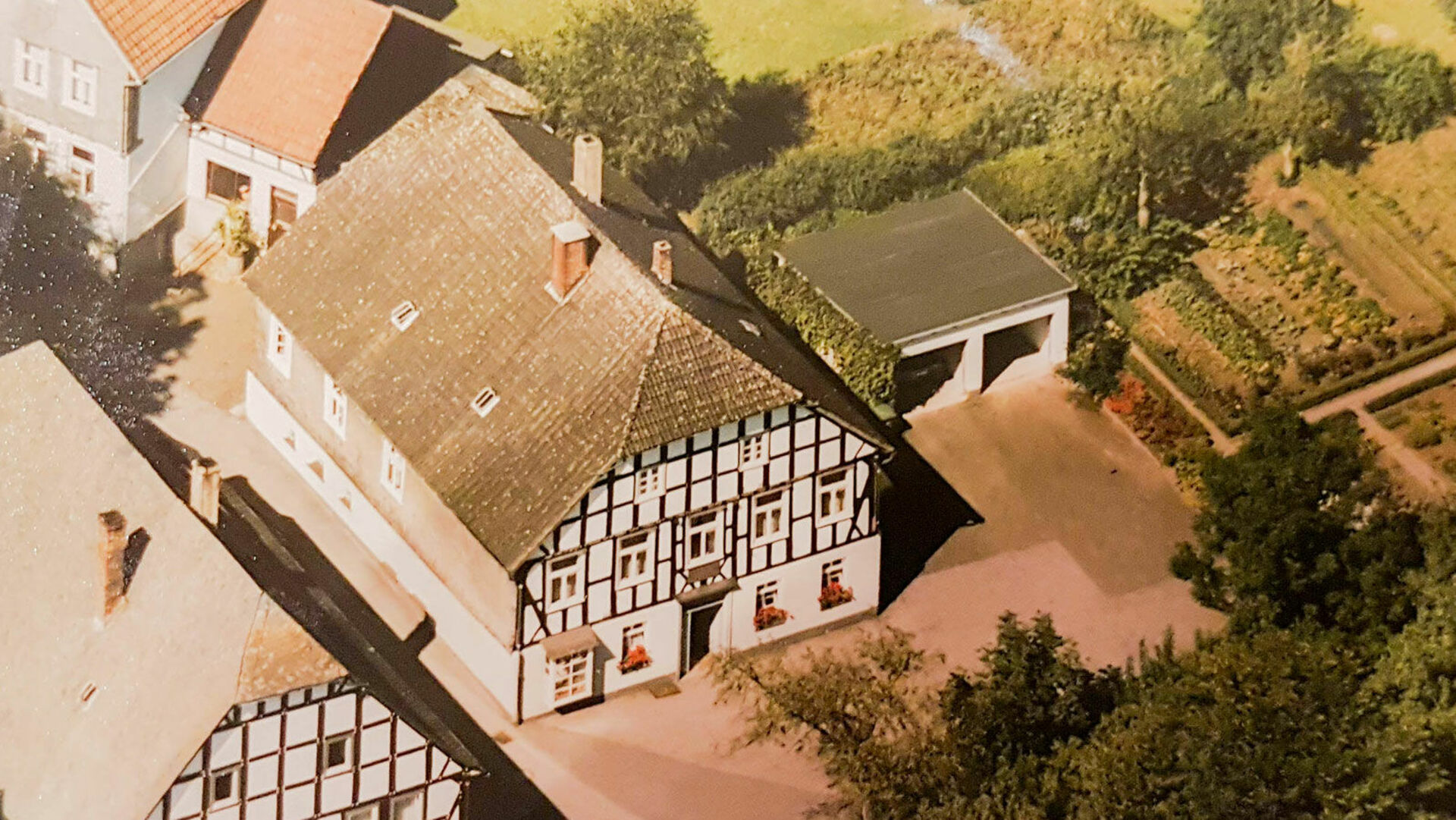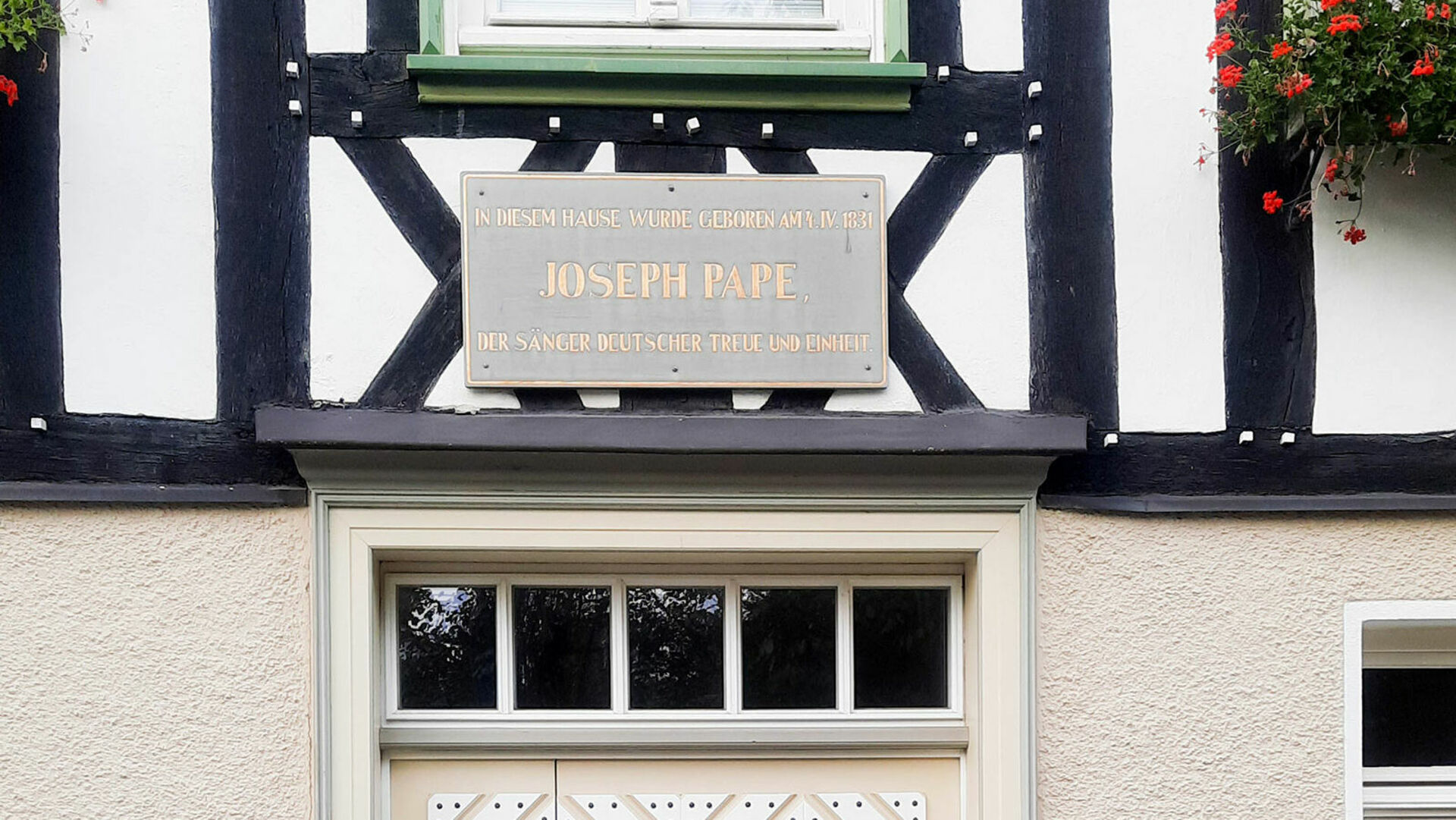The Pape House in Eslohe
Birthplace of a local poet
Joseph Pape was born the son of a farmer in what is now the Pape House. Throughout his life, he is said to have been proud of the fact that it was April 4, 1831, Easter Day of all days. However, the future poet only lived in the house where he was born for a short time because his father died six months later. Although his mother moved away with her son, the house was sold and the Pape family no longer lived here, it has gone down in local history as the birthplace of the poet Joseph Pape.
The church chronicle mentions a Herman Pape zu Marpe on August 27, 1619, who was enfeoffed with the "Gute bover dem Kirchhofe zu Eßleue". Perhaps this refers to the site of today's Pape house. The Bernhard Schröder farm stood here from 1717-1733. It is possible that the present house was built on its foundation walls. This is indicated by the inscription on the beam. Johann Pape and his wife Aloysia celebrated the topping-out ceremony on September 26, 1796, and the Pape family remained in possession of the house until October 1831. Little Joseph, later a well-known poet, was still a baby when his father Franz Ferdinand died at the age of just 31. Mother Anna Maria Katharina Agatha then sold the Pape house and moved in with a related priest in Eslohe. In 1872, the parish bought the building as a sexton's house. The Pape house was almost destroyed by a fire in the roof truss in 1921. It has been a listed building since 1985.
The Pape house stands in the center of the village on an almost triangular plot, bordered on two sides by streets and on the third side by the Esselbach. The half-timbered structure is set on a solid, plastered base, with plastered compartments. The rear gable and the left eaves side seen from the entrance are slated. The crippled hipped roof is pantiled and the neoclassical door frame is also architecturally significant. The later glass box on the left-hand side of the house front is the display of a former store. Inside the house, the current owners have decoratively exposed some half-timbered beams. Seen from the Esselbach bridge, together with house no. 11, the impression of the original village situation is created. Due to this eye-catching function and as the birthplace of the poet Josef Pape, the house has historical significance.
Today's vacation home for up to 15 people is run by the Lautenschütz siblings. They have extensively renovated the building and offer it for rent via various platforms. Different families lived here before them. In the 1950s, the sexton lived on the first floor and the organist on the upper floor. There was also a store in the building until 1989. From 1956, it was run by Maria Scherer. Her husband Albert Scherer was the sexton at the time. The store had a large selection of religious items such as rosaries, prayer books, candles and nativity figures as well as secular items such as walking sticks ("Stabelstöcke") and plaques with the Esloh coat of arms. Tobacco products and smoking accessories were also sold in large quantities. Sauerland the house is still named after the family that built it, which included the poet Joseph Pape. The family moved out for good after 35 years.
Vertelleken
Chatting out of the sewing box...
One of Joseph Pape's poems is "Der alte Enste" (The old ), which has 31 stanzas. It is the eerie story of a ghost that the priest Enste must serve in order to redeem him. Pape's poem says that Enste died of it in his prayer chair. His successor, vicar Johannes Dornseiffer, was puzzled by this story. He knew that Enste had died of pneumonia in 1788, "well provided with the holy sacraments". So he asked Pape by letter, and he replied that he had taken up a folk tale. Pape lived until the age of 11 in Eslohe. He had "always approached Rochuskapelle with dread" and only dared to "climb in between the iron bars of a western window, which happened several times on the boys' side." He and his friends were therefore in the chapel without permission. Through the priest's question, something from the poet Pape's childhood became known by chance.


